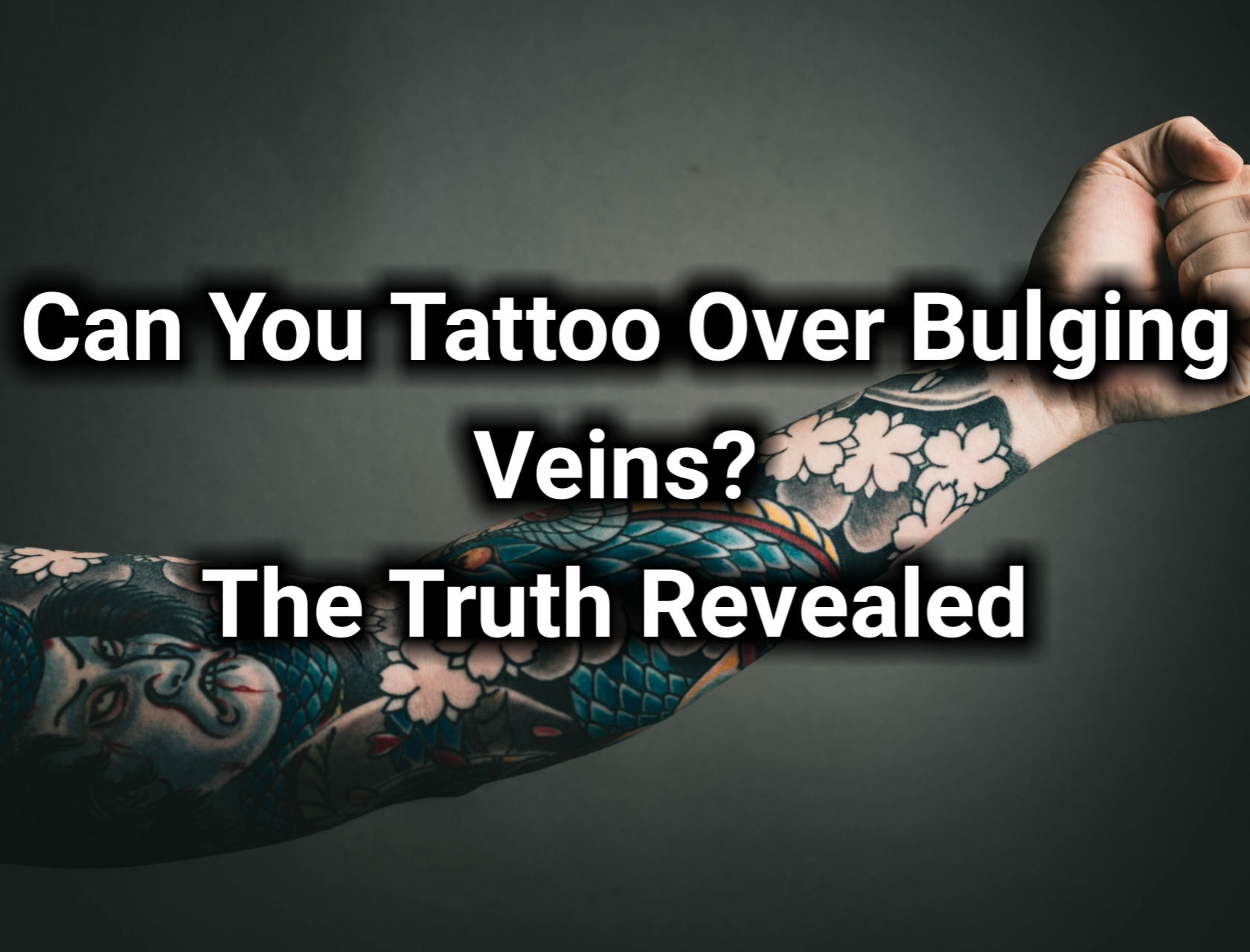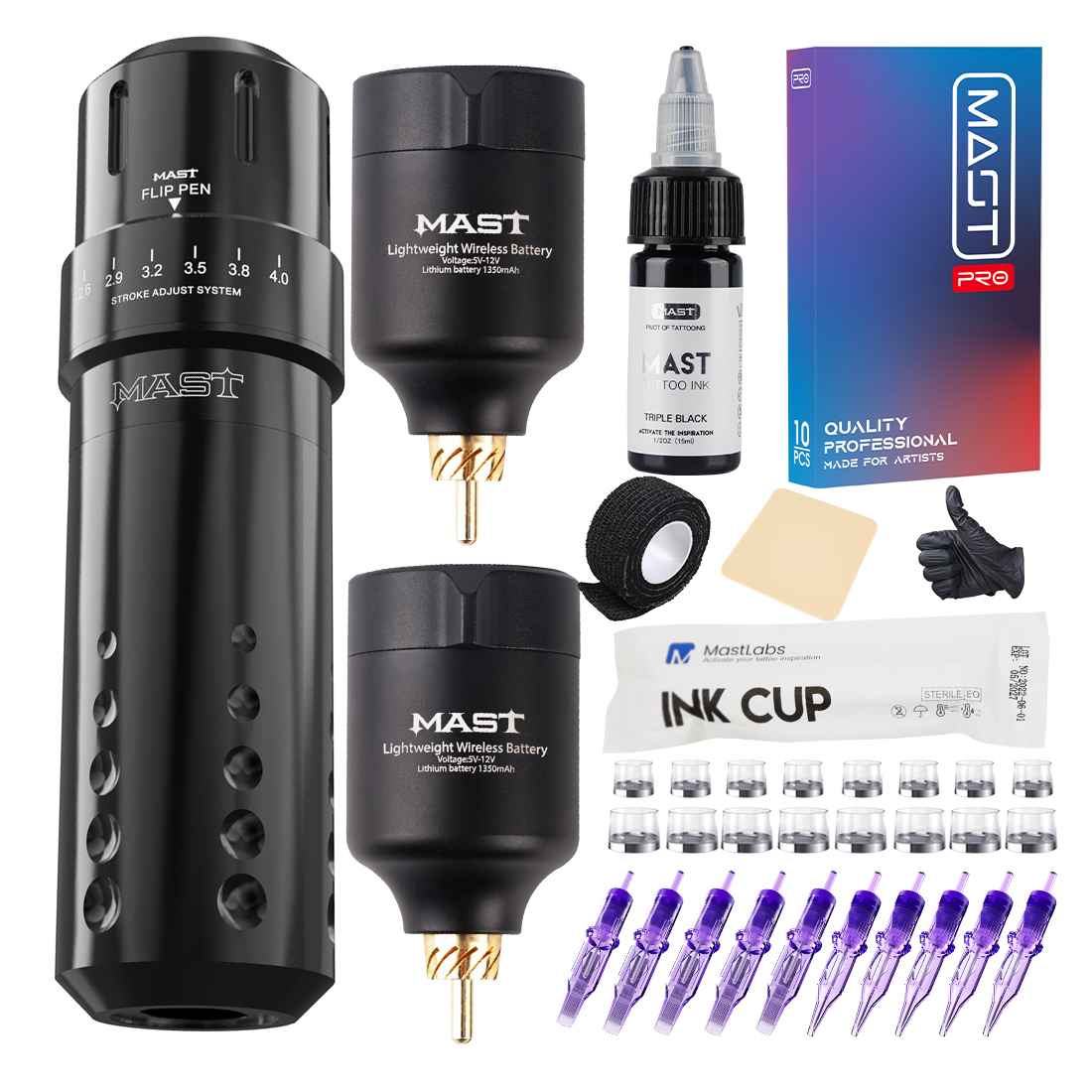When it comes to getting a tattoo, many people want to ensure that the chosen design looks flawless and enhances their overall aesthetic appeal.
However, for individuals with bulging veins, the decision to get a tattoo may raise concerns. Can you tattoo over bulging veins?
In this article, we will delve into the factors to consider, the associated risks and complications, alternative options, and the necessary preparations for tattooing over bulging veins.
Tattoos have become a popular form of self-expression, allowing individuals to adorn their bodies with meaningful symbols and designs.
However, tattooing over bulging veins requires careful consideration due to various factors that can affect the outcome and safety of the procedure.
Factors to Consider Before Tattooing Over Bulging Veins
Yeah. I know you want those tattoos badly. Just that they will be placed over bulging veins. This means it’s very important to consider some factors in order to ensure your safety.
1. Health Considerations
Prior to tattooing over bulging veins, it is crucial to consider your overall health.
Certain medical conditions, such as varicose veins or circulatory disorders, may increase the risks associated with the procedure.
Consulting with a medical professional is advisable to evaluate your individual situation.
2. Consultation with a Medical Professional
Seeking the opinion of a medical professional who specializes in veins, such as a vascular surgeon or a dermatologist, can provide valuable insights into the feasibility and potential risks involved in tattooing over bulging veins.
3. Location of the Veins
The location of the bulging veins is a significant factor to consider.
Veins located directly in the area where you want to get a tattoo may pose challenges in achieving the desired results.
The proximity of the veins to the tattoo site should be carefully evaluated.
4. Size and Severity of the Bulging Veins
The size and severity of the bulging veins can influence the success of tattooing over them.
Smaller, less prominent veins may be less likely to interfere with the tattooing process compared to larger, more pronounced ones.
The severity of the bulging veins, such as the extent of swelling or twisting, should also be taken into account.
Also Read: Can You Tattoo over Veins on Hand?
Risks and Complications Associated with Tattooing Over Bulging Veins
While tattooing over bulging veins is possible in some cases, it is essential to be aware of the potential risks and complications that may arise during and after the procedure.
1. Bleeding and Bruising
Tattooing over bulging veins can increase the risk of bleeding and bruising.
The needle puncturing the skin near the veins may lead to excessive bleeding, making it challenging to achieve precise and clean lines in the tattoo design.
Bruising can also occur due to the fragile nature of the veins.
2. Distortion of the Tattoo Design
The presence of bulging veins beneath the skin’s surface can distort the tattoo design.
As the veins may affect the evenness of the skin, the lines and colors of the tattoo may appear uneven or disrupted.
3. Pain and Discomfort
Tattooing over bulging veins can cause additional pain and discomfort compared to tattooing on regular skin.
The sensitivity and potential fragility of the veins may intensify the sensation during the tattooing process.
4. Potential Damage to Veins
Tattooing over bulging veins carries the risk of damaging the veins themselves. The needle’s insertion may cause injury to the veins, leading to further complications.
Using good and safe tattoo needles, however, can help reduce the possibility of puncturing bulging veins.
Also Read: Do tattoos make it harder to find veins?
Alternative Options for Tattooing Over Bulging Veins
In cases where tattooing directly over bulging veins poses too many risks or challenges, several alternative options can be considered to achieve the desired tattoo design.
1. Redesigning the Tattoo
A skilled tattoo artist can help redesign the tattoo to incorporate the bulging veins creatively.
By adapting the design to work around the veins or incorporating them into the artwork, it is possible to create an aesthetically pleasing tattoo that complements the natural contours of the body.
2. Covering the Veins with a Different Tattoo
Another option is to choose a tattoo design that strategically covers the bulging veins.
By selecting a larger and more intricate design that overlaps the veins, it is possible to divert attention away from the veins while still achieving a visually appealing tattoo.
3. Exploring Other Body Placement Options
If tattooing directly over the bulging veins is not recommended, exploring alternative body placement options can be a viable solution.
A skilled tattoo artist can help you identify suitable areas that are not affected by bulging veins, ensuring a successful and visually pleasing tattoo.
Also Read: Can a Tattoo Needle Hit a Vein?
Preparing for a Tattoo Procedure on Bulging Veins
If you decide to proceed with tattooing over bulging veins, proper preparation is crucial to minimize risks and optimize the outcome.
1. Finding an Experienced Tattoo Artist
To ensure the best results, it is vital to find an experienced tattoo artist who has successfully tattooed over bulging veins before.
Their expertise and understanding of the unique challenges posed by bulging veins can significantly reduce the likelihood of complications.
2. Evaluating Tattoo Design and Placement
Collaborate closely with your chosen tattoo artist to evaluate the tattoo design and placement.
They can provide valuable input on how to incorporate the bulging veins into the design or suggest alternative placements that minimize potential risks.
3. Proper Pre-Tattoo Care
Taking care of your skin before the tattoo procedure is essential. Keep the area clean, moisturized, and avoid excessive sun exposure or tanning beds, as these can affect the skin’s condition and make the tattooing process more challenging.
Aftercare and Healing Process
Once the tattooing procedure is complete, proper aftercare is crucial to facilitate healing and minimize complications.
1. Taking Care of the Tattooed Area
Follow the tattoo artist’s instructions regarding aftercare, which typically involve cleaning the tattooed area with mild soap and water, applying a thin layer of recommended ointment or moisturizer, and avoiding activities that may irritate or damage the tattoo.
2. Monitoring for Complications
Keep a close eye on the tattooed area for any signs of infection, excessive swelling, or other complications. If you notice anything concerning, consult your tattoo artist or seek medical advice promptly.
3. Following the Tattoo Artist’s Instructions
Adhere to the specific aftercare instructions provided by your tattoo artist.
They may recommend avoiding certain activities, such as swimming or excessive sweating, to promote optimal healing.
Also Read: What Happens if a Tattoo Needle Hits a Vein?
Conclusion
So, can you tattoo over bulging veins? Tattooing over bulging veins requires careful consideration and evaluation of various factors.
While it may be possible in some cases, the risks and complications associated with the procedure cannot be overlooked.
It is crucial to consult with a medical professional and find an experienced tattoo artist who can provide guidance and ensure the best possible outcome.
Exploring alternative options and proper pre-tattoo care and aftercare are essential steps to minimize risks and achieve a satisfactory result.
FAQs
Can tattooing over bulging veins cause health problems?
Tattooing over bulging veins can carry certain risks, including bleeding, bruising, pain, and potential damage to the veins.
Consulting with a medical professional is recommended to assess individual health considerations.
Is it possible to cover bulging veins with tattoos?
Yes, it is possible to cover bulging veins with tattoos. Skilled tattoo artists can creatively incorporate the veins into the design or suggest alternative placements to achieve an aesthetically pleasing result.
How can I find a tattoo artist experienced in tattooing over bulging veins?
Research local tattoo artists, view their portfolios, and inquire about their experience with tattooing over bulging veins.
Reviews and recommendations from previous clients can also provide insights into their expertise.
What are the alternative options if tattooing directly over bulging veins is not recommended?
Alternative options include redesigning the tattoo to work around the veins, choosing a design that strategically covers the veins, or exploring different body placement options that are not affected by bulging veins.
How long does the healing process take after tattooing over bulging veins?
The healing process can vary depending on individual factors and the size of the tattoo.
It typically takes around two to four weeks for the tattooed area to heal completely, but it is essential to follow the aftercare instructions provided by your tattoo artist for optimal healing.
Can You Tattoo Over Varicose Veins?
Tattooing over varicose veins is generally not recommended. Varicose veins are a sign of underlying venous insufficiency, which can lead to complications during the tattooing process and hinder proper healing.
It is advisable to consult with a healthcare professional and a reputable tattoo artist to discuss your specific situation and the potential risks involved. They can provide guidance and recommendations based on your individual circumstances.
Can You Tattoo Over Spider Veins?
Tattooing over spider veins is generally not recommended due to several factors. Spider veins are visible through the skin, and tattoo ink may not effectively mask their appearance, potentially making them more noticeable.
The uneven texture of the skin caused by spider veins can also lead to an unsatisfactory outcome when tattooing over them. It’s important to address the underlying medical condition causing spider veins and explore alternative treatments such as sclerotherapy or laser therapy.
Consulting with a medical professional or dermatologist is crucial for accurate diagnosis and guidance on the best course of action for addressing spider veins safely and effectively.






